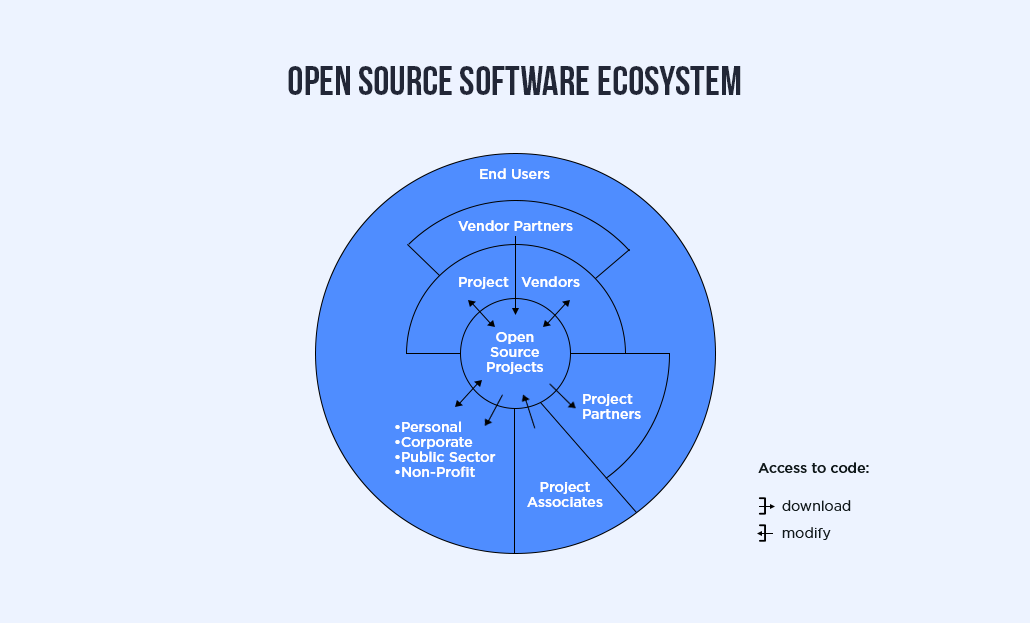Explore how businesses can adopt the .Net framework to enhance the application development ecosystem.
Are you happy with your Return on Investment (ROI) or are your projects, creating a big hole in your pocket? If you are still struggling with such projects, it’s a suitable time to adopt the .NET framework!
The re-usable code and object-oriented programming features of .NET decrease your operation cost to a remarkable extent. It is a unique model that is based on actions& data rather than logic. Thus, it saves the development time (less logic, less headache). In addition, it is secure and ensures easy deployment with a controlled code sharing environment and side-by-side versioning (run multiple versions of your application on the same machine).
.NET was developed by Microsoft as a software framework in 2002. It is pronounced as dot net and comprises various coding languages, libraries, and editors. You can build a wide array of applications in the .Net framework. These are web applications, mobile applications, games, cloud, Internet of Things (IoT), etc.
Dot Net features a huge library that contains lots of readymade pieces of code. We can categorize the libraries as per various departments like encryption, security, database access, etc. The readymade code offers support to both simple as well as complex data structures.
Read this blog to know top five things about .NET framework.
Top Five Things About .NET Framework
1. Old Version of .Net was revised to Open-source
.NET was announced by Microsoft in the late 1990’s with the initial name, Next Generation Windows Services (NGWS). It was not an open-source framework until 2014. Being open source is itself is an advantage. Dot Net is free to use and distribute among users. In addition, any user can mold the framework as per needs.
Being open source, it became a collaborative platform which further created the foundation for cross platform applications. In essence, open source is an agile development style, which decreases the project completion time in .NET.
In a closed source, even being a project vendor and partner, you don’t have the access to the code. However, an open source system allows access to the projects completely. This diagram shows how an open-source software ecosystem works.
The open-source projects are accessible directly to project vendors, partners, and associates. Being a vendor partner, you can only download the projects. However, the project vendors can both download and modify the projects.

2. .NET is not limited to Windows
Being an exclusive product of Microsoft, .NET was only used for Windows. Microsoft released the first version of Dot Net Core in 2016. Unlike Dot Net, it runs on multiple computer platforms. Being both open-source as well as cross-platform is a blessing. It opens up more opportunities by adding new platforms for your applications. You can create applications for Mac OS X and Linux with Dot Net Core. In addition, you can use .Net Core for the Internet of Things (IoT) and cloud.
3. The Main Programming Languages of .Net
Dot Net is a huge software framework, which contains 32 programming languages. Some of the prominent languages are C#, F#, and Visual Basic. The other programming languages are A Sharp (.NET), Boo, Cobra, Fantom, IronPython, Sharp, Oxygene, etc. to name a few.
.Net comprises both frontend and backend languages. As for example, ASP.NET is used as backend and C# & VB.NET are used for frontend development.

4. Dot Net More Secure than Java
Security is an important feature of any software framework, and a study shows that Dot Net is more secure than Java. The vulnerability density of Java is 30.0. and .Net is 27.2. Here, the term ‘Vulnerable Density’ is way of quantifying the number of defects in sample code (average defects per MB of code scanned). In a nutshell, this survey says that Dot Net is a more secure platform than Java.
Therefore, .NET is growing as a popular software framework to develop applications for the banks and other financial institutions.
5. Dot Net is a Big Umbrella
.NET is a big umbrella that embraces many languages, tools, and technologies. Being a popular worldwide service provider, Microsoft has created a systematic development eco-system for application creation, quality assurance, reengineering, and migration.
Thus, being compatible with a wider network of languages and skills, Dot is interoperable too! The term ‘interoperable’ refers to the virtual working ability of any hardware or software with different hardware/software including those, which are not invented yet.
In essence, it is a language-neutral framework. It can work with the most standard computer languages and operating environments. Dot Net has three types of interoperability:
- COM interop (.Net with COM components)
- .NET interop (COM components with .NET)
- P/Invoke (.Net with Win32 DLLs )
Here COM stands for Component Object Model and Microsoft introduced it as a binary-interface standard between the two binary modules where one is a library and another is a program run by a user. It defines the standard of how these two binary modules meet and interact with each other.
When we access (with .Net runtime) dot net components from COM components, it is called forward compatibility. And the .Net runtime also allows us to access old COM code from .Net components and its called backward compatibility.
Conclusion
To sum up we can say that dot net is a standard software framework to program and run your Mobile and Web applications seamlessly. The Dot Net Core software framework is expected to grow bigger in the coming years.
Clarion comprises a workforce of 400+ individuals that has empowered more than 1000 SMBs across the globe. We are the right destination you were looking for to hire top .NET developers. For any further assistance feel free to get in touch with us.
Author




